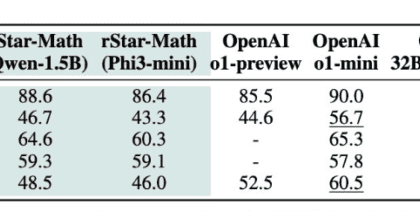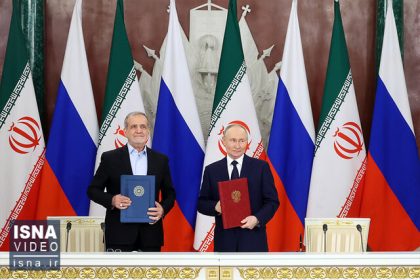For years, the governments of Iran have been seeking the development of science and technology by compiling development documents. Some of these documents have been more successful than others. Currently, the Ministry of Science is seeking to manage the country's development activities in this field by compiling a draft document on artificial intelligence.
According to Ecomotive, citing Mehr news agency, the artificial intelligence document is being compiled since 2018 and the 12th government. The original version of the document was prepared in 1400 and is currently being compiled in the hall of the Supreme Council of the Cultural Revolution.
According to this document, after its approval by the Supreme Council of the Cultural Revolution, a “National Artificial Intelligence Center” will be established within 6 months at most, and this center is responsible for preparing the applications of this technology in various fields for the steering headquarters for the implementation of the comprehensive scientific plan of the country. .
AI draft document perspective
According to the vision of the draft artificial intelligence document, in the horizon of 1412, Iran should be “among the leading artificial intelligence countries in the world and use this technology in governance, the country's macro issues, wealth creation and social welfare to create the most productivity.”
At the same time, the development of human capital, the improvement of local artificial intelligence infrastructures and models, the growth of intellectual and scientific products in this field and becoming the artificial intelligence research pole in the region. International authority in at least one branch of this field Along with the competitiveness of the country's economy using artificial intelligence and the rapid growth of the artificial intelligence economy are other major goals of this document.
In this document, national strategies and actions are considered in 7 sectors of governance infrastructure, education and research, data and processing infrastructure, development of technological products and commercialization, market development, international interactions, promotion and culture. These measures include things like facilitating the access and exploitation of the country's data while maintaining the national security and privacy of individuals, developing legal bills to create the required legal infrastructure, developing appropriate standards, training effective human resources, reforming the education system for Strengthening human advantages against artificial intelligence and avoiding unequal competition between humans and artificial intelligence Is.
Development of artificial intelligence education with interdisciplinary courses
Another part of the artificial intelligence draft document refers to the development of relevant training at different levels from high school to university and the creation of intensive training courses to create specialized human resources. This department will deal with the development of various components of the education ecosystem, including associations, scientific and industrial communities, the establishment and expansion of think tanks and intellectual centers in this field, and supporting research and development in this field.
Data Infrastructure and Processing: Developing a Native Large Linguistic Model (LLM).
Development of extensive national infrastructure to create Open data ecosystemcreating a processing infrastructure, preparing government and public data lists, facilitating the access of elites and companies to the infrastructure, developing the ability to design and build dedicated artificial intelligence hardware, and supporting the development of a large native language model suitable for the Iranian-Islamic language and culture. Some of the measures in this area are in the draft artificial intelligence document.
In addition, in the business development and product commercialization section, the most important strategy of this document is to encourage large companies to use the capacity of start-up companies and support and facilitate business development and product and service commercialization. For this purpose, creating a network of artificial intelligence laboratories and supporting the development of software packages.
Attracting projects and entering international markets
For the development of the market, various goals include the development of the artificial intelligence market with an emphasis on the role of large companies, including the evaluation of the workforce, holding national awards, attracting international projects, supporting domestic companies for international competition, forming consortiums and cooperation of technologists in the value chain, and upgrading services. Government has been raised in the draft document of artificial intelligence.
In order to promote the correct use of artificial intelligence in industry, government and society, promotion and culture building in ways such as using the capacity of schools and universities, holding scientific competitions and conferences, informing public sector managers and explaining the social and moral effects of artificial intelligence have been emphasized. The aim of this strategy is to increase society's knowledge in the field of artificial intelligence and the ethical and effective use of this technology, emphasizing the principles and values of Islamic civilization.
National priorities of the draft AI document: no focus and priority
According to this document, the national priorities of the artificial intelligence document are as follows:

Tasks of the National Center for Artificial Intelligence in the draft of the Artificial Intelligence document
The duties of the National Artificial Intelligence Center are compiled in 8 sections, which are:
- Dividing the general tasks of the institutions and determining the sectoral missions and coordinating them by identifying and using the institutional and structural infrastructure of the country to implement this document.
- Material, moral, scientific and facilitation support for technologists and companies active in the field of artificial intelligence, service providers, financing funds, technological projects and their commercialization
- Creating financial, physical, service, support, software, equipment infrastructures and semi-industrial and industrial production spaces
- Facilitating the provision of technology development and commercialization services by providing the resources, facilities and infrastructure needed by project implementers and private sector technology service brokers.
- Developing a road map for the implementation of the document, including providing operational plans to implement the actions of the document
- Determining the responsible and partner institutions for the implementation of programs.
- Creating information systems of companies and specialized products and services, playing a role as a specialized arm of needs assessment, prioritization, orientation and future research in the field of artificial intelligence of the country and providing the schedule for the implementation of programs and the budget required for their implementation.
- Submitting the road map for the implementation of the document to the Steering Staff for the implementation of the comprehensive scientific map of the country no later than six months after the notification of the document and submitting the annual evaluation report for the implementation of the document to the Steering Staff for the implementation of the comprehensive scientific map of the country
I have to say; By the decree of the President, the mission of forming the “National Steering Council and National Center for Artificial Intelligence” has been assigned to Ruhollah Dehghani, Vice President for Science, Technology and Knowledge-Based Economy.
Dark spots of AI draft document
The draft AI document has serious dark spots. Apart from its big and broad priorities that the concept of “Priority” and may prevent the national focus on a field.
On the other hand, two other important issues currently leave the country unanswered. The first problem is the mass migration of elites and people from the country and the second problem is global sanctions. The only answer presented in this text to the problem of mass migration is the use of international projects. An issue that is directly affected by international sanctions and will not necessarily be applicable.
It should be seen what solution the Supreme Council of Cultural Revolution will add to this draft and final document to solve these problems.
How do you rate this article?
RCO NEWS

















